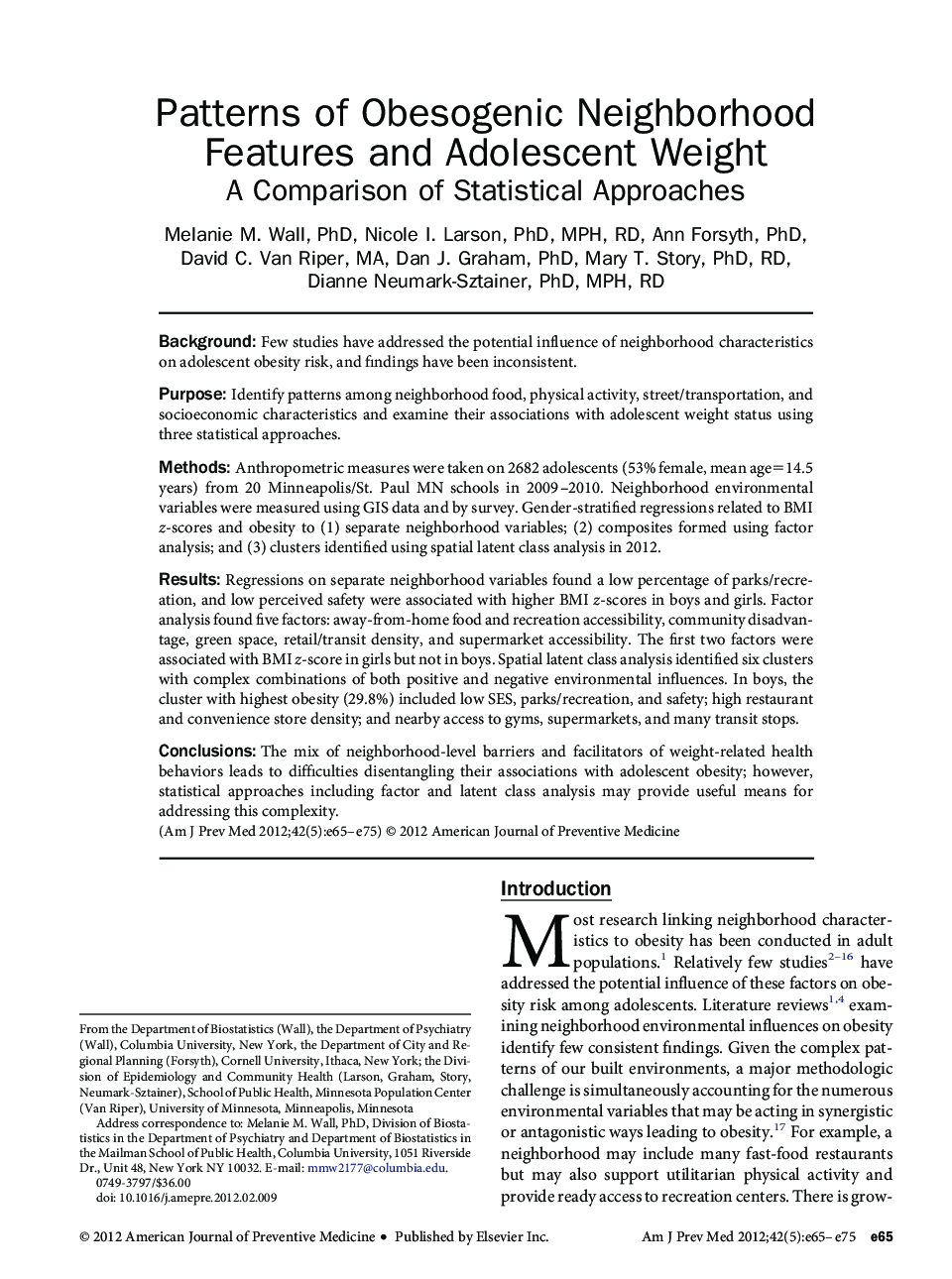| کد مقاله | کد نشریه | سال انتشار | مقاله انگلیسی | نسخه تمام متن |
|---|---|---|---|---|
| 4192564 | 1608692 | 2012 | 11 صفحه PDF | دانلود رایگان |

BackgroundFew studies have addressed the potential influence of neighborhood characteristics on adolescent obesity risk, and findings have been inconsistent.PurposeIdentify patterns among neighborhood food, physical activity, street/transportation, and socioeconomic characteristics and examine their associations with adolescent weight status using three statistical approaches.MethodsAnthropometric measures were taken on 2682 adolescents (53% female, mean age=14.5 years) from 20 Minneapolis/St. Paul MN schools in 2009–2010. Neighborhood environmental variables were measured using GIS data and by survey. Gender-stratified regressions related to BMI z-scores and obesity to (1) separate neighborhood variables; (2) composites formed using factor analysis; and (3) clusters identified using spatial latent class analysis in 2012.ResultsRegressions on separate neighborhood variables found a low percentage of parks/recreation, and low perceived safety were associated with higher BMI z-scores in boys and girls. Factor analysis found five factors: away-from-home food and recreation accessibility, community disadvantage, green space, retail/transit density, and supermarket accessibility. The first two factors were associated with BMI z-score in girls but not in boys. Spatial latent class analysis identified six clusters with complex combinations of both positive and negative environmental influences. In boys, the cluster with highest obesity (29.8%) included low SES, parks/recreation, and safety; high restaurant and convenience store density; and nearby access to gyms, supermarkets, and many transit stops.ConclusionsThe mix of neighborhood-level barriers and facilitators of weight-related health behaviors leads to difficulties disentangling their associations with adolescent obesity; however, statistical approaches including factor and latent class analysis may provide useful means for addressing this complexity.
Journal: American Journal of Preventive Medicine - Volume 42, Issue 5, May 2012, Pages e65–e75